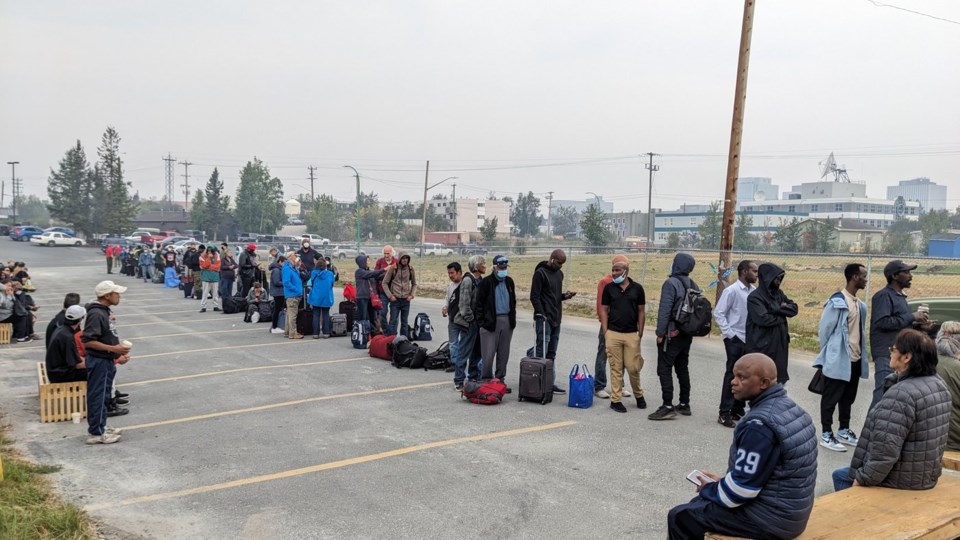YELLOWKNIFE — Last year's catastrophic wildfire season found the Northwest Territories short on the firefighters, equipment, information and communications needed to fight it, a new report concludes.
And the territory's environment minister said the challenges his government faced should be a warning to every jurisdiction in Canada as climate change rewrites the firefighting playbook.
"Capacity is a challenge," said Jay Macdonald. "That is the biggest message the country needs to hear."
The N.W.T. was certainly challenged in 2023.
The report from consultancy MNP released Wednesday counted 306 fires over the fire season that scorched 34,000 square kilometres, forced the evacuation of 19 communities, including the territorial capital of Yellowknife, and killed one firefighter.
The report says the fires — worsened by two years of drought and high temperatures — strained almost every aspect of the territory's response capability.
After three decades of staff cuts, the report says the N.W.T.'s firefighting force was inadequate and at least two more 22-member crews are required. Staff shortages forced some crews to work more than the mandated 14 days without a rest.
As well, it points out that the territory's first fire started five days before firefighter training began.
"(This) resulted in untrained crews being deployed and previously trained crews being pulled from active duty," the report says.
Too few people were trained to operate the N.W.T.'s fire behaviour prediction model. Basic data on topography, forest composition and fuel loads was missing.
"The overall data available in the N.W.T. is not as detailed as that in other jurisdictions," says the report. "This impacted the accuracy of wildfire modelling."
The report finds aircraft were scarce and sometimes misused.
"Difficulties were encountered in matching aircraft type to requirements, with inadequate aircraft often dispatched for required tasks."
Getting the right gear to the right place proved difficult as government staff struggled with equipment management software. Communication and command was confused as questions arose over who was responsible for what.
"Issues included unclear assignments of firefighting duties outside municipal boundaries and a lack of (agreements) to define responsibilities among stakeholders, exacerbating co-ordination gaps during evacuations and wildfire response," the report says.
Like other Canadian jurisdictions, the N.W.T. requested help from the military. While the report calls that help "instrumental," it says the army's role should be limited to mop-up, hot spot patrol, moving equipment and clearing bush.
"Military crews lack training in wildfire suppression tactics, thereby limiting their operational effectiveness," it says. "This contrasts with the amount of logistical support and planning needed to deploy military crews."
Macdonald said the 2023 wildfire season was the most challenging in the territory's history.
"It tested our resolve, our preparedness and our strategies," he said.
In response to the report's 25 recommendations, he said the government has already brought on two new fire crews, which saw action this season. New weather stations have been installed and their operations made year-round.
The government is working with agencies such as the Canadian Forest Service to improve its understanding of forest makeup and vulnerability, said Mike Gravel, the territory's director of forest management.
"Understanding the fuels ahead of a fire plays a critical role," he said. "It's not a quick fix."
Macdonald said climate change is making fire seasons like 2023's the new standard in wildfire preparedness and governments need to acknowledge that. The scars of last summer's fires linger on both the landscape and in northerners, he said.
"The long-lasting impact is the impact to the land," said Macdonald, a lifelong northerner. "A lot of the large treed areas we used to drive through are no more, and that has an impact right across the N.W.T."
This report by The Canadian Press was first published Aug. 28, 2024.
— By Bob Weber in Edmonton
The Canadian Press

